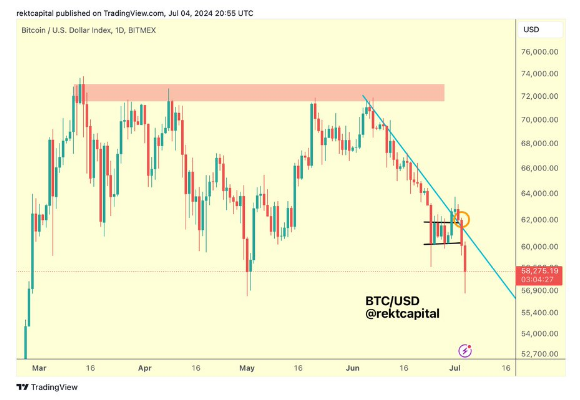Latest News
How AI and crypto are shaping the future of finance | MATIC News


Over the last three years, the crypto space has undergone massive upheavals. Alongside the boosting from stimulus packages in 2021, venture capital (VC) firms had invested $33 billion in crypto and blockchain startups.
The following year, the Federal Reserve triggered a domino of crypto bankruptcies with its interest rate hiking cycle, starting from the Terra (LUNA) crash and culminating in the FTX Ponzi scheme collapse.
The promise of DeFi lost its luster, not helped by over $3 billion lost in DeFi hacks during 2023. The ongoing Bitcoin bull run shows the lack of altcoin confidence as the so-called Altcoin Season is yet to manifest.
In June 2023, BlackRock’s head of strategic partnerships, Joseph Chalom, noted that DeFi’s institutional adoption is “many, many, many years away”. However, there is a case to be made that the emerging AI narrative can fuse with blockchain technology and its applications.
Taking in lessons from the previous cycle, what would that AI-crypto landscape look like?
Laying the AI Foundation with Crypto Composability
Looking back, it is safe to say that “DeFi” was subsumed by companies on top of tokenized layers, such as Celsius Network or BlockFi, rendering DeFi into CeFi. These companies successfully drove crypto adoption as such, only to end up sullying the very word “crypto”.
A renewed DeFi v2 should then focus on a superior user experience that doesn’t spark the demand for centralized companies to make it so. Most importantly, DeFi security must be fortified. The most promising solution in that direction is the zero-knowledge Ethereum Virtual Machine – zkEVM.
By abstracting chain transactions via zero-knowledge proofs (ZKPs), zkEVM increases network throughput and reduces gas costs. On top of that, zkEVM simplifies the user experience by facilitating alternative token payments for gas fees. In other words, zkEVM-like solutions pave the road to scalability needed for AI applications.
AI applications inherently involve high volumes of data, making it a potential bottleneck for blockchain networks. With this obstacle ahead, Polygon zkEVM makes it possible to generate AI artwork via the Midjourney image generator. In this process, the results could be tokenized as NFTs with low fees.
Building further on smart contracts of other kinds, the crypto space has laid the groundwork for AI with composability and permissionless access. Combined, this creates an autonomous and efficient infrastructure for financial markets. As every piece of market action can be disassembled into smart contracts, composability brings innovation across three composability layers:
- Morphological – components communicating between DeFi protocols, creating new meta-features.
- Atomic – ability for each smart contract to function independently or in conjunction with other protocols’ smart contracts.
- Syntactic – ability for protocols to communicate based on standardized protocols.
In practice, this translates to Lego DeFi bricks. For instance, Compound (COMP) allows users to supply liquidity into smart contract pools. This is one of DeFi’s revolutionary pillars as users no longer require someone’s permission to either loan or borrow. With smart contracts acting as liquidity pools, borrowers can tap into them by providing collateral.
Liquidity providers gain cTokens in return as interest. If the supplied token is USDC, the yielding one will be cUSDC. However these tokens can be integrated across the DeFi board into all protocols compatible with the ERC-20 standard.
In other words, composability creates opportunities for the multiplicity of yields, so that no smart contract is left idle. The problem is, how to efficiently handle this rise in complexity? This is where AI comes into play.
Amplifying Efficiency with AI
When thinking of artificial intelligence (AI), the main feature that comes to mind is superhuman processing. Financial markets have long ago become too complex for human minds to handle. Instead, humans have come to rely on predictive algorithms, automation and personalization.
In TradFi, this typically translates to robo advisors prompting users on their needs and risk tolerances. A robo advisor would then generate a profile to manage the user’s portfolio. In the blockchain composability arena, such AI algorithms would gain much greater flexibility to siphon yields.
By reading the market conditions on the fly as they access transparent smart contracts, AI agents have the potential to reduce market inefficiencies, reduce human error, and increase market coordination. The latter already exists in the form of automated market makers (AMMs) that deliver asset price discovery.
By analyzing order flows, liquidity and volatility in real-time, AI agents are ideally suited to optimize liquidity supply and even prevent DeFi flash loan exploits by coordinating between DeFi platforms and limiting transaction sizes.
Inevitably, as AI agents increase market efficiency through real-time market monitoring and machine learning, new prediction markets could emerge as liquidity deepens. The job of humans would then be to set bots to arbitrate against other bots.
At $42.5 billion across 2,500 equity rounds in 2023, AI investments have already outpaced the crypto peak of 2021. But which AI-crypto projects showcase the trend?
Spotlight on AI-Crypto Innovators
Since the launch of ChatGPT by OpenAI in November 2022, AI has been an attention grabber. The attention previously reserved for memecoins became diverted into AI advancements in reasoning, art generation, coding and most recently, text-to-video generation via Sora.
Across these fields of human interest, they all rely on the scaling of data centers. Unlike crypto tokens, which are smart contracts, AI tokens are the base blocks of text that the AI agent disassembles into relationship units. Depending on the attunement of each AI model, these tokens represent contextual windows for the relationships between concepts.
For each user prompt, it is challenging to allow maximum processing capacity. When the AI model breaks the text into tokens, the output relies on the token size. In turn, the token size determines the quality of the generated content, whatever it may be.
Obviously, the larger the token size, the larger the potential for an AI model to consider the greater number of concepts when generating content. Given such inherent limitations, AI tokens naturally fit blockchain tech.
Just as Web3 gaming tokenizes in-game assets for decentralized ownership, tradeable currency and reward incentives, the same can be done with AI. Case in point, Fetch.AI (FET) is an open-access protocol to connect Autonomous Economic Agents, via the Open Economic Framework to the Fetch Smart Ledger.
The FET token aims to monetize network transactions, pay for AI model deployment, reward network participants and pay for other services. And just as people connect with DeFi services via wallets, they can connect with Fetch.AI’s agentverse with a Fetch Wallet to take advantage of deployed AI protocols.
For instance, one of the many AI agents currently in beta agentverse is PDF Summarization Agent.
As a prospective pathway to democratizing AI agent access and deployment, FET token has gained 300% value since the beginning of the year. According to Market Research Future, AI agents market is forecasted to grow to $110.42 billion by 2032 from $6.03 billion 2023. This represents a compound annual growth rate (CAGR) of 43.80%.
Ultimately, we are likely to see an ecosystem of AI agents interacting with DeFi protocols and other services that would benefit from automating real-time decisions. This may expand to AI agents aiding self-driving EVs or even helping execute delicate surgeries and patient care. Pediatric surgeon Dr. Danielle Walsh at the University of Kentucky College of Medicine in Lexington said:
“A patient who wakes up at 1:00 in the morning 2 days after a surgical operation can contact the chatbot to ask, ‘I’m having this symptom, is this normal?’”
In medical diagnostics, Massachusetts-based Lantheus Holdings (LNTH) had already deployed its PYLARIFY AI imaging agent for early prostate cancer detection. With AI-crypto projects like Fetch.AI, many such services could be tokenized to full extent.
The Road Ahead: Challenges and Opportunities
Ahead of AI integration, blockchain platforms face the same problem – institutional adoption. Do smaller protocols have a chance to penetrate the mainstream, or is this reserved for institutions?
DeFi may have paved the way for tokenized financial markets, but big players are likelier to instill public confidence.
For instance, the Canton Network, which is supported by Big Bank and Big Tech, may supplant smaller DeFi fish. Eventually, the convenience of same-day bank transfers could be seamlessly integrated into blockchain networks. This is especially pertinent given that Microsoft is powering the Canton Network with Azure cloud while developing AI products.
At the same time, plenty of users would prefer to stay within open-access ecosystems, riding the value appreciation of AI-crypto tokens. Moreover, crypto protocols don’t have to be directly geared toward AI agent deployment. Case in point, The Graph (GRT) could be used for AI apps as a blockchain data indexing service.
Based on this speculation, this “Google of Blockchain” has gained a 103% boost year-to-date. One of the most prospective crypto projects aiding AI could be Injective Protocol (INJ). As it “injects” AI algorithms into aforementioned DeFi market actions, Injective aims to simplify and automate complex DeFi operations.
At the base layer of the AI-crypto intersection could be Allora Network, using its zero-knowledge machine learning (zkML) and federated learning to build AI apps for augmented DeFi experience.

If the rollout of these open apps is successful, institutional networks such as Canton would have diminished appeal. This dynamic will largely depend on regulatory agencies, which are yet to materialize rules even for the crypto space.
Conclusion
AI is poised to make data more intelligible, actionable and pertinent to a specific user. On the other hand, blockchain technology formalized and decentralized the logic of human action into self-executing smart contracts.
When the two spheres meet, we get AI agents with a renewed purpose. A new generation of tokenized robo-advisors that take full advantage of DeFi composability. And as AI agents explore new possibilities, new markets will emerge.
From predictive analysis to injecting liquidity into on-chain markets, AI agents are ready to craft a hyper-financialized future where, starting from Bitcoin itself, humans will encounter plenty of building blocks to capitalize on.
Mentioned in this article
Latest News
How institutional networks are preparin for Bitcoin integration | MATIC News


The following is a guest post from Shane Neagle, Editor In Chief from The Tokenist.
Half a year after Bitcoin ETFs launched, it is safe to say that they have been the most successful ETF launch in history, having generated a $309.53 billion volume. Just within the first day of trading, spot-traded Bitcoin ETFs pulled in $4 billion, crushing the previous record holder, Gold ETF (GLD), which took 3 days to top $1 billion in inflows.
This is all the more impressive as Bitcoin is a novel asset compared to ancient gold. The trend clearly points to Bitcoin being more fit for purpose in the digital age. But what is that purpose?
BlackRock’s Head of Thematic & Active ETFs, Jay Jacobs, recently noted that Bitcoin is a “potential hedge against geopolitical and monetary risks”. By now, most people are aware that central banks’ ability to tamper with the money supply brings many moral hazards, from record-breaking budgetary deficits to inflation as an extra layer of taxation to cover those wild spending sprees.
Gold is less suited to counter that ability because it is physical, confiscatable, and not truly limited. Because Bitcoin is one-tenth the size of the gold market, its price is more volatile, but it is also a more attractive gains machine.
Now that Bitcoin ETFs have simplified and institutionalized access to more exciting digital gold, which steps are needed to ensure that trend continues?
Ensuring Network Reliability
Owing to its proof-of-work (PoW) consensus mechanism, Bitcoin is dual-natured. It is a digital asset anchored into the physical reality of energy and hardware. This underlying foundation gives Bitcoin its value as a decentralized counter to central banking.
In turn, the components of that foundation, the Bitcoin network, have to scale up to continue the institutional intake. Presently, the Bitcoin network handles around 412k transactions per day, nearly double from two years ago. Although the median transaction fee oscillates depending on network load, it rarely exceeds $5 per transaction.
In parallel, their networks have to scale to ensure the Bitcoin network handles orders of magnitude greater load coming from institutions. To increase their stability and robustness, they have to tackle multiple network components, from software and servers to hardware and internet connection.
Scalable Blockchain Solutions
Just as IBM made significant contributions to developing current large language models (LLM), the legacy computer company also made a strong case for blockchain scaling with IBM Blockchain. This immutable ledger is based on an open-source Hyperledger Fabric framework with a complete set of tools for building blockchain platforms.
Such a framework could interface with the Bitcoin ecosystem via atomic swaps, such as virtual vaults with timed smart contracts. Similarly, Visa proposed an experimental Universal Payment Channel (UPC) framework as a hub for blockchain network interoperability. International banking network SWIFT had already completed the second test phase for atomic settlement capability.
Zooming out, a picture emerges of enterprise-grade blockchain solutions for institutions, interlinking with international hubs and intermediating with institutions that handle exposure to Bitcoin, such as Coinbase.
Dependable Servers
Powering scalable blockchain solutions comes in the form of hardware. These can either be internal servers, via customized solutions offered by Broadcom, or offloaded to external options like the Canton Network.
As a decentralized infrastructure, the Canton Network is a network of networks, building on Daml smart contract language and micro-services architecture. The latter allows for each service plugged in to to have its own server, expandable with more CPUs and storage.
Using atomic settlements, the Canton Network makes real-time settlement possible across different blockchain apps. By outsourcing services to such networks, businesses and institutions can focus on core features rather than IT infrastructure management, including the maintenance of CPUs, dedicated GPU hosting to diversify into AI support, and other essential hardware.
Internet Connectivity
Nodes in any blockchain network have to communicate continuously to validate transactions and execute settlements by adding them as the next block on the blockchain ledger. In other words, internet connectivity necessarily involves redundancy and failover strategies.
For example, when Solana experienced network downtime problems, co-founder Anatoly Yakovenko hired Jump Crypto to develop Firedancer as a secondary network validator client to fortify network throughput and stability.
With broader solutions like the Canton Network, enjoying support from the Big Tech and Big Bank, redundancies, multi-channels, backup systems, and load balancing are already baked into the DLT cake.
Enhancing Network Performance
It is inherent in all types of computer networks to suffer from some level of packet loss and jitter. Packet losses can happen due to overwhelming demand, causing congestion, network interference, faulty software or hardware, and data corruption on hard drives.
Transmission Control Protocols (TCP) deal with packet losses by retransmitting data, which causes delays, or by Forward Error Correction (FEC), which adds redundant data to packets, removing the need for retransmission. The Bitcoin Relay Network uses FEC to this effect, as does the Blockstream Satellite network, as an alternative avenue to receive Bitcoin blockchain data.
As for jitter, certain data packets can arrive at different intervals. When this jitter happens, packets land in different orders, disrupting data stream. The jitter problem is typically handled with buffers that temporarily store streamed packets to ensure their correct order arrival.
Another way to handle jitter is to introduce quality of service (QoS) network configurations that prioritize critical traffic. This can also be applied to reduce packet loss. Network design itself is a big factor in reducing jitter by making sure the network has as few hops as possible.
The Bitcoin network benefits from its decentralized design because each transaction requires multiple confirmations. If jitter occurs, later confirmations offset the delays. Most importantly, the Bitcoin mainnet has an auto-adjusting difficulty mechanism that maintains the average block time at 10 minutes.
In practice, the management of the network’s data packet loss and jitter lands on on-site vs. ISP solutions.
On-site vs. ISP Solutions
On-site solutions require organizations to handle their IT infrastructure. While this gives institutions total control, including regulatory data compliance and faster personnel response, the upfront costs for hardware and storage are significantly higher.
On the other hand, ISP-hosted solutions are easier to scale as specialized companies are likely to be well-oiled machines, handling both maintenance and network uptime. On the clients’ end, this requires a reliable internet connection and the selection of the best packet loss and jitter metrics.
Case in point, Amazon Web Services (AWS) gives clients a Global Accelerator tool to enhance and balance network performance. Alongside Amazon Managed Blockchain and Quantum Ledger Database (QLDB), such services propelled AWS to become one of the infrastructure pillars of the blockchain space.
As for ISPs themselves, they are typically less forthcoming on their jitter/packet loss metrics, as they rely on several factors. To that end, there are many tools to track network latency, packet loss and jitter, such as PingPlotter.
Jack Dorsey’s Block (former Square) opted to build its own Bitcoin mining network, utilizing its 3 nm chip design, likely built by TSMC foundries. With an in-house, open-source mining hashboard, which is compatible with Raspberry Pi controllers, Block is heading to set up new standards for the Bitcoin ecosystem.
The other piece of the Bitcoin scalability puzzle revolves around energy.
Sustainable Energy Solutions
It is often said that Bitcoin is digital energy, or better yet, tokenized energy. Ultimately, Bitcoin’s proof-of-work sets it apart from thousands of copypasta cryptocurrencies, making it virtually unassailable from a network security standpoint. And that consensus algorithm exerts energy, as expected from any work.
But how much and what kind of energy? Bitcoin’s energy expenditure is often compared to a nation’s footprint, such as the Netherlands or Argentina. It is sufficiently high for Greenpeace to call for a campaign to change Bitcoin from proof-of-work to proof-of-stake.
BRÆKING: @greenpeaceusa continues its SEXIST anti-#Bitcoin campaign, releasing new video about “Bitcoin BROS.”
NEWSFLASH to Greenpeace misogynists: there are WOMEN in Bitcoin, & Bitcoiners will not stand by while you ERASE them.
Please retweet if you think Greenpeace is sexist. pic.twitter.com/qX3emR8TaL
— Walker⚡️ (@WalkerAmerica) June 22, 2024
Yet Greenpeace itself could launch such a shift, given that Bitcoin’s open-source code is available to all. The problem is that without a network and market interest, such a tweak would be meaningless.
In the meantime, over 50% of the Bitcoin network draws power from renewable sources. According to Daniel Batten’s research via Batcoinz, most of it comes from hydro, wind, solar, and nuclear.
Not only did Bitcoin step onto the majority-green territory, but it has been acknowledged as a key ingredient in balancing power networks. Namely, the Electric Reliability Council of Texas (ERCOT) pays large Bitcoin mining companies, such as Bitdeer and Riot Platforms, to stabilize the grid during anomalous conditions such as heat waves.
As recently as June 13th, ERCOT recommended that Bitcoin mining be directly integrated as a Controllable Load Resource (CLR) to boost power grid balancing. Additionally, there is an increasing trend for Bitcoin miners to use flared gas from oil drilling operations. Otherwise wasted and burned off, this byproduct can be captured to power Bitcoin mining rigs.
Now that BlackRock, the main driver of the ESG framework, is pushing Bitcoin, this is a clear signal to institutional investors that the “dirty Bitcoin” narrative is a bygone concern.
Block has yet to reveal its 100% solar-powered mining facility in West Texas. However, multiple Bitcoin mining companies, such as Bitfarms, Iris Energy, TeraWulf, and CleanSpark, have already transitioned to near-zero carbon footprints.
With nuclear power on the horizon due to AI data center demands, investors should expect even greater greening of Bitcoin operations. And in the likelihood of Donald Trump’s victory in the next presidential elections, Bitcoin sustainability concerns will further fade away.
Conclusion
In 2022, Messari noted that gold mining produces three times as many carbon emissions as Bitcoin. Since then, Bitcoin has outperformed gold ETF capital inflows by an even greater magnitude.
It turns out that there is great value to be found in an asset that cannot be tampered with on a practical level and is not controlled by anyone. Rather, Bitcoin is enforced by ingenious cryptography, tethering code to hardware assets and energy.
With capital damn broken, and access to Bitcoin exposure put on the same level as any other stock, it is a race to new highs and new lows to buy the dip. Building from the experience of other blockchain networks and mining companies, the tech is readily available to tap into this growing ecosystem.
Latest News
Ex-Obama Solicitor General accuses regulators of intentionally debanking crypto firms | MATIC News


Former Solicitor General Donald B. Verrilli, who served during the Obama administration, has accused US regulators of intentionally stifling the crypto industry through debanking practices.
Verrilli, who now serves as Grayscale Investments’ senior legal strategist, made the remarks in a joint amicus brief filed on July 3 with Paul Clement, the former Solicitor General under President George W. Bush.
The statement highlighted growing bipartisan concerns about the regulatory environment for digital assets and
Debanking claims
The amicus brief was filed on behalf of Custodia Bank, which is appealing a Wyoming district court’s decision to grant the Federal Reserve discretion to deny it a Master Account.
In a joint statement with Clement, Verrilli suggested that the Office of the Comptroller of the Currency (OCC) has issued informal guidance that effectively limits banks’ ability to engage with crypto firms.
He argued that these guidelines, though not official, set stringent requirements that are difficult for banks to meet, impacting their ability to support the growing crypto industry. Additionally, the brief argues that such practices amount to a deliberate effort to debank the crypto industry, stifling competition and innovation.
Verrilli was particularly critical of the court’s decision in favor of the Fed, describing it as a significant obstacle for the crypto sector. His comments, supported by Clement, reflect a broader bipartisan concern about the current regulatory approach toward the crypto industry.
Fox Business journalist Eleanor Terrett recently reported on Verrilli’s perspective, noting the potential consequences of the Fed’s decision. Some market analysts warn that without more adaptive regulations, the United States could lose its competitive edge in the global crypto market.
Terret added that Verrilli and Clement’s joint support for Custodia Bank signals a shifting political landscape around crypto, with bipartisan backing growing as the November election approaches.
Growing influence
Digital assets are becoming a significant issue in the upcoming 2024 US elections, influencing both political discourse and voter behavior. The crypto industry has gained substantial traction, with its advocates pushing for more favorable regulations and greater acceptance among lawmakers.
This has led to increased political engagement from both industry stakeholders and voters interested in digital assets, with key political figures and presidential candidates increasingly aligning themselves with the crypto sector.
Former President Donald Trump recently pledged to support the interests of digital asset traders and has started accepting campaign contributions in cryptocurrencies. On the Democratic side, Robert F. Kennedy Jr. has also embraced cryptocurrencies, with his campaign accepting crypto donations and advocating for the protection of Americans’ rights to use and hold digital assets.
This growing political alignment is seen as crucial for mobilizing younger voters, who are typically more inclined to invest in cryptocurrencies. According to recent data, Millennials and Generation Z make up a significant portion of the crypto user base, and their support could be pivotal in close elections.
A poll by the Crypto Council for Innovation (CCI) found that a candidate’s stance on digital assets is important to many voters, with 83% of those surveyed preferring candidates who advocate for clear crypto regulations.
Meanwhile, Crypto entities are preparing to spend over $80 million on the elections, aiming to boost allies and promote legislation favorable to the industry. This has resulted in surprising bipartisan support for crypto-friendly legislation, with notable figures like Senate Majority Leader Chuck Schumer and former House Speaker Nancy Pelosi emerging as unexpected allies
Mentioned in this article
Latest News
OpenAI did not reveal security breach in 2023 – NYT | MATIC News
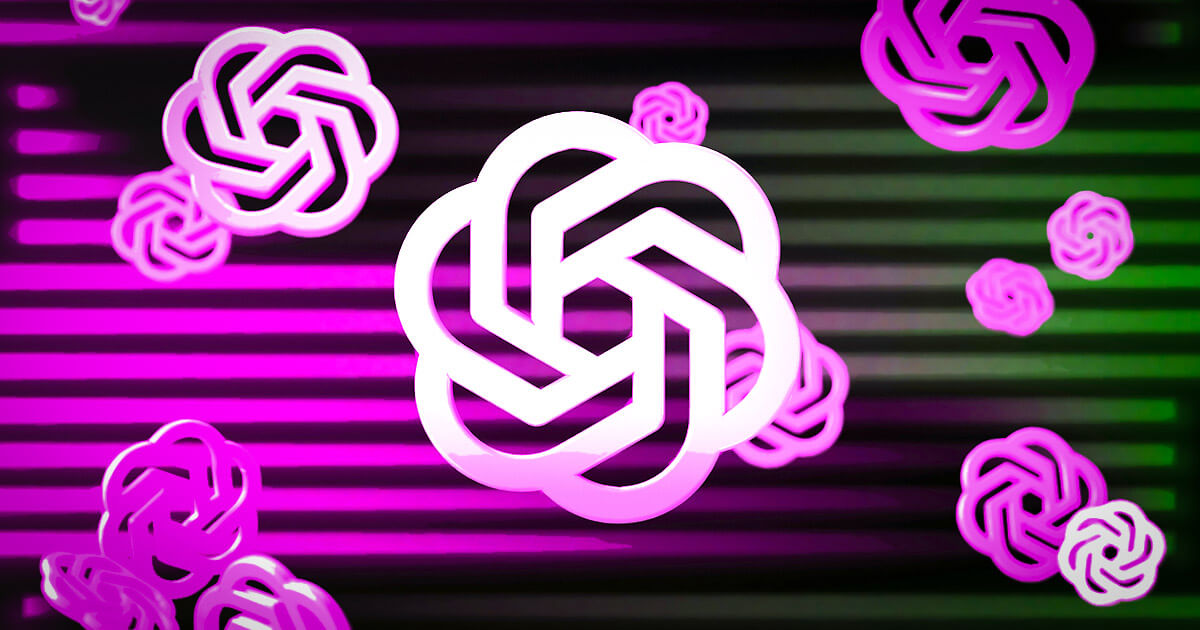

OpenAI experienced a security breach in 2023 but did not disclose the incident outside the company, the New York Times reported on July 4.
OpenAI executives allegedly disclosed the incident internally during an April 2023 meeting but did not reveal it publicly because the attacker did not access information about customers or partners.
Furthermore, executives did not consider the incident a national security threat because they considered the attacker a private individual without connection to a foreign government. They did not report the incident to the FBI or other law enforcement agencies.
The attacker reportedly accessed OpenAI’s internal messaging systems and stole details about the firm’s AI technology designs from employee conversations in an online forum. They did not access the systems where OpenAI “houses and builds its artificial intelligence,” nor did they access code.
The New York Times cited two individuals familiar with the matter as sources.
Ex-employee expressed concern
The New York Times also referred to Leopold Aschenbrenner, a former OpenAI researcher who sent a memo to OpenAI directors after the incident and called for measures to prevent China and foreign countries from stealing company secrets.
The New York Times said Aschenbrenner alluded to the incident on a recent podcast.
OpenAI representative Liz Bourgeois said the firm appreciated Aschenbrenner’s concerns and expressed support for safe AGI development but contested specifics. She said:
“We disagree with many of [Aschenbrenner’s claims] … This includes his characterizations of our security, notably this incident, which we addressed and shared with our board before he joined the company.”
Aschenbrenner said that OpenAI fired him for leaking other information and for political reasons. Bourgeois said Aschenbrenner’s concerns did not lead to his separation.
OpenAI head of security Matt Knight emphasized the company’s security commitments. He told the New York Times that the company “started investing in security years before ChatGPT.” He admitted AI development “comes with some risks, and we need to figure those out.”
The New York Times disclosed an apparent conflict of interest by noting that it sued OpenAI and Microsoft over alleged copyright infringement of its content. OpenAI believes the case is without merit.
Mentioned in this article
-

 Hot Projects4 months ago
Hot Projects4 months agoBitcoin Blasts Past $70,000 to Register New All-Time High | MATIC News
-

 Latest News4 months ago
Latest News4 months agoCourt upholds SEC’s unregistered securities claims against Gemini, Genesis’ Earn program | MATIC News
-
Hot Projects2 months ago
Bitcoin Will Be Set For New ATHs If It Breaks This Resistance: Analyst | MATIC News
-

 Latest News2 months ago
Latest News2 months agoSix Coinbase customers claim the exchange is violating securities laws in new lawsuit | MATIC News
-
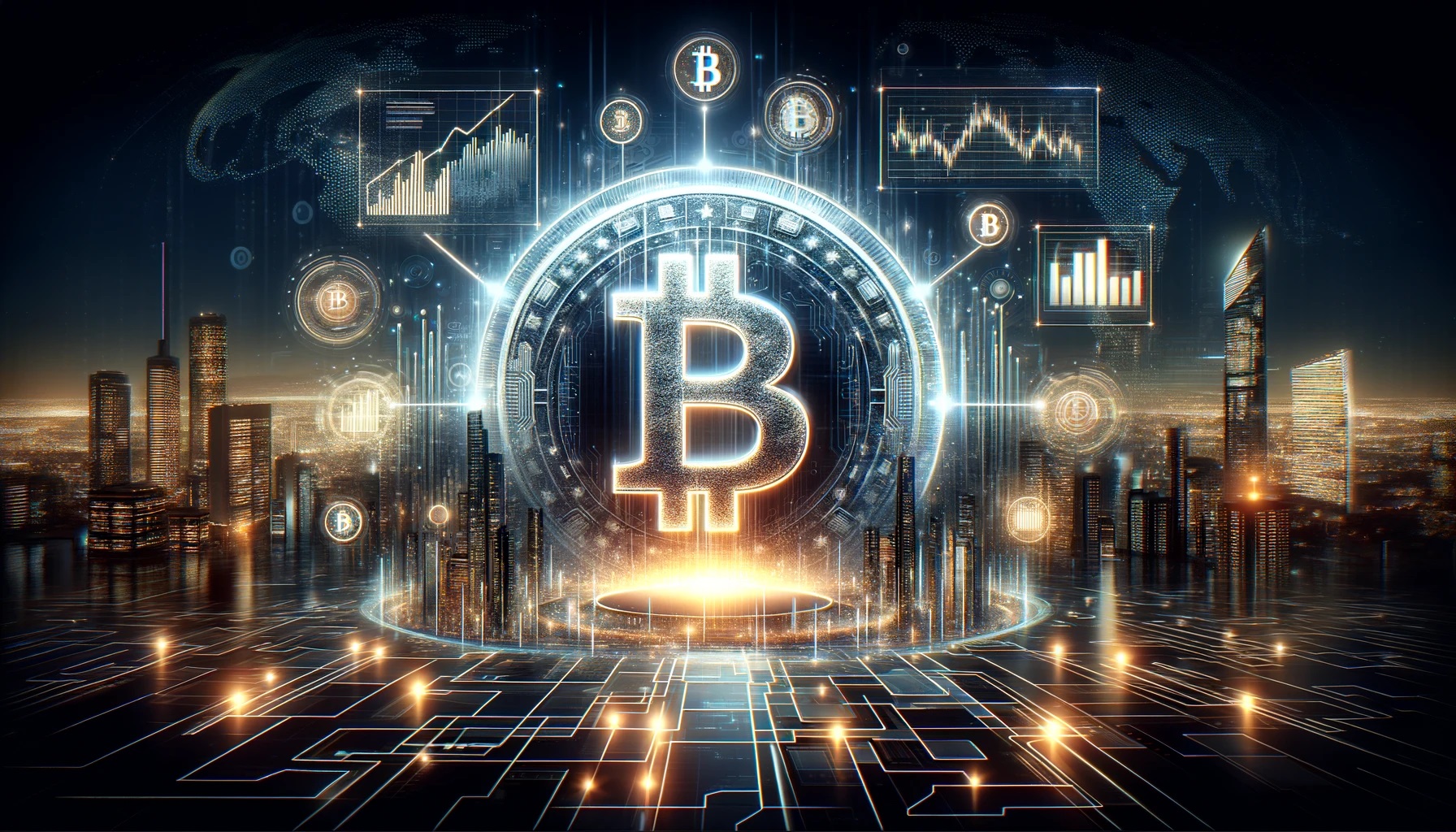
 Hot Projects3 months ago
Hot Projects3 months agoBitcoin ETF Inflows Could Eclipse $1 Trillion, Predicts Bitwise CIO | MATIC News
-
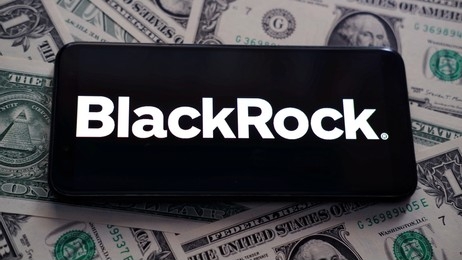
 Hot Projects3 months ago
Hot Projects3 months agoOndo Finance Joins BlackRock Tokenized Fund As Inflows Surpass $160M | MATIC News
-
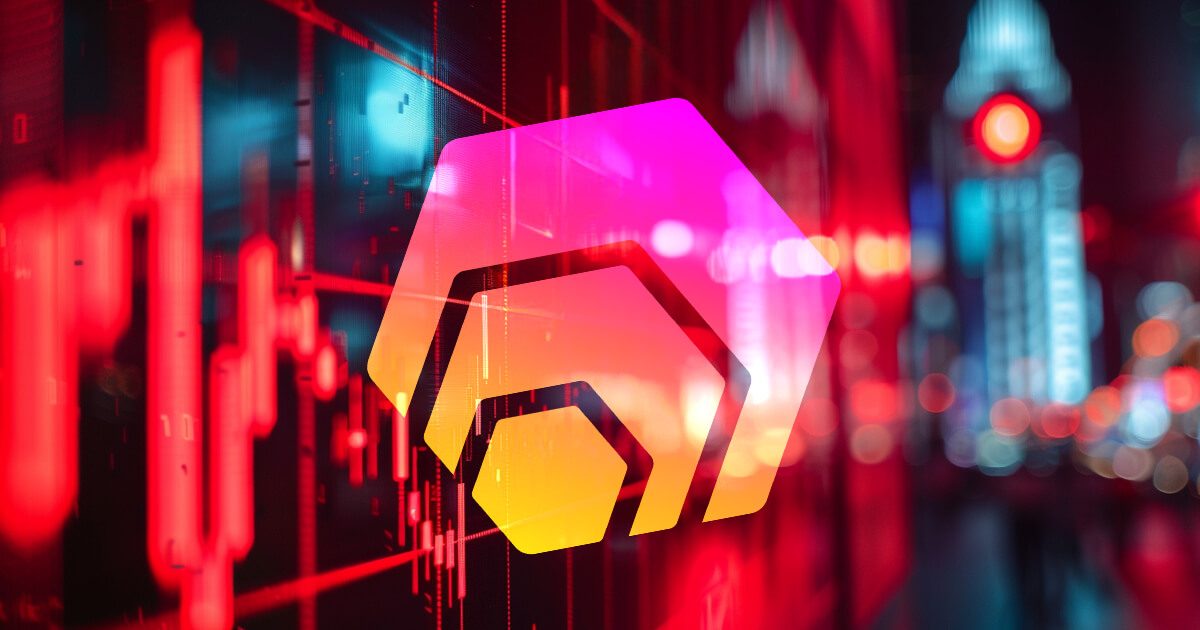
 Latest News4 months ago
Latest News4 months agoOver $1 billion wiped off HEX’s valuation following Richard Heart’s disparaging remarks | MATIC News
-

 Latest News2 months ago
Latest News2 months agoNew Hampshire representative proposes Bitcoin ETF investment to address state financial liabilities | MATIC News


